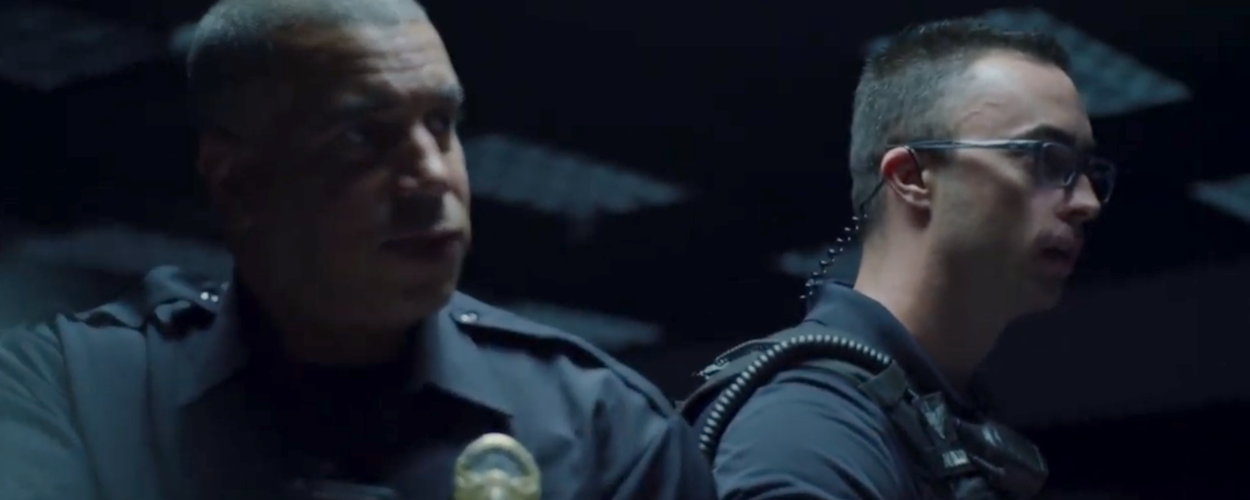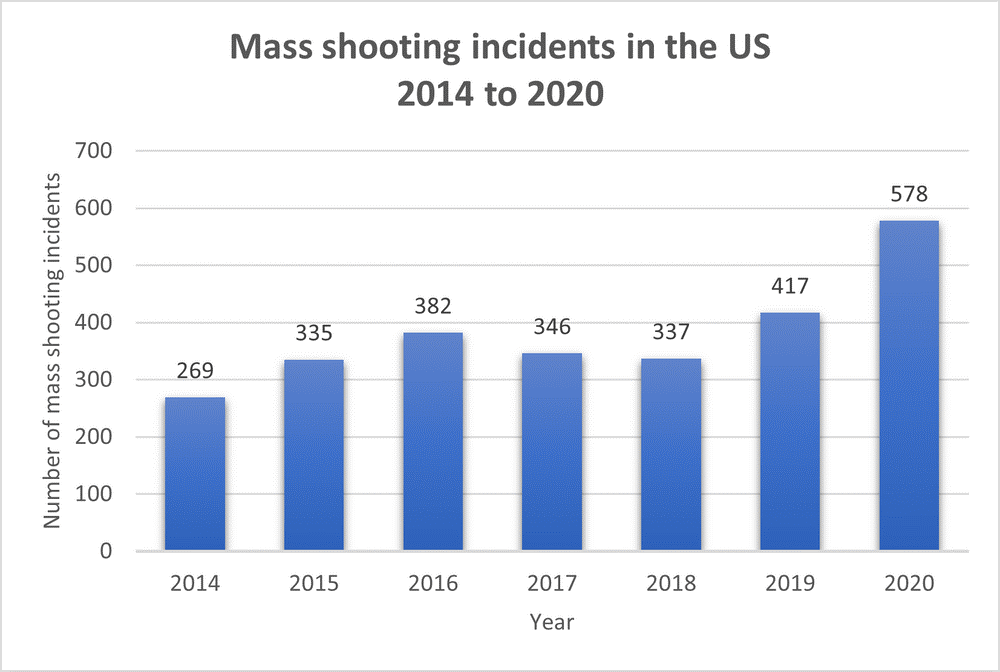
The Federal Bureau of Investigation (FBI) has labeled and identified 277 incidents of an “active shooter” between 2000 and 2018. These terrible incidents resulted in 2,430 casualties—884 people killed and 1,546 wounded—not counting the shooters.
Unfortunately, this number continues to rise. The year 2018 held 27 incidents, 213 casualties, 2 law enforcement personnel killed and 6 law enforcement officers wounded.
But in 2019, the numbers rose to 28 incidents, 247 casualties, 2 law enforcement personnel killed and 15 law enforcement personnel wounded. In addition, the number of incidents meeting the “mass killing” definition rose, as did the number of shooters wearing body armor and the total number of shooters.
Switching gears from incidents of an active shooter to mass shooting incidents, the number has also sharply increased over the years. The infographic below uses information from the Gun Violence Archive, which defines mass shootings as “a minimum of four victims shot (either fatally or not) excluding any shooter killed or injured in the attack.”

In just the past six years, the number of identified mass shooting incidents has almost doubled. And despite the pandemic, lockdowns and increased personal security, 2020 has been the highest number of mass shooting incidents.
What this means to departments everywhere: active shooter events are on the rise, so must also be officer training and preparedness. Though eliminating the number of active shooter events is the ultimate goal, officers everywhere must also be heavily trained on this topic, should it happen in their community.
Over the course of the last few years, departments everywhere have begun implementing a wide variety of techniques designed to prepare officers for active shooter situations. While many of these training solutions are beneficial, VirTra would like to introduce the most immersive, skill-transferring and certified active shooter training solution.
The V-300 Immersive Simulator
The V-300® is a highly realistic, 5-screen simulator that immerses the officer in the chosen scenario. A combination of high-resolution visuals and surround sound help increase the physical and psychological fidelity of the situation, making an officer’s responses similar to the same incident in the field. Instructors can select from one of the many active shooter scenarios, allowing officers to practice and transfer skills learned in the classroom to the simulator—then ultimately to the field.
For example, watch this video as officers enter a real VirTra Active Threat/Active Killer scenario from its latest release of V-VICTA curriculum and immediately take necessary steps to mitigate: view here.
By combining stress inoculation, rapid decision-making and tactical firearms training, officers receive a higher quality training that cannot be replicated by other training simulator “solutions”, lectures or even role-playing. In the case of Active Threat/Active Killers, VirTra also offers certified curriculum to supplement classroom learning before officers step into the simulator.
Active Threat/ Active Killer Curriculum
V-VICTA™ curriculum—Virtual Interactive Coursework Training Academy—comes free with all law enforcement simulators. Each curriculum is developed exclusively with nationally-recognized partners, maximizes training time and is nationally-certified.
As such, the Active Threat/Active Killer curriculum was critically reviewed by members of IADLEST and passed the rigors of their independent review process. This presents instructors with training hours and pre-packaged classroom curriculum and corresponding simulator scenarios to teach, train, test and sustain all officers.
Prepare your officers to the best of your abilities. For more information on integrating Active Threat/Active Shooter (ATAK) curriculum in your department, contact a VirTra specialist.
Recently Published
Join Our Newsletter







